Several recent articles have explored historical invasions of Taiwan, both real and planned, in order to examine what problems the People’s Republic of China (PRC) would encounter if it invaded. The military and geographic obstacles remain formidable.
Taiwan, though, is part of a larger package of issues created by the broad front of PRC expansion. That package also includes the Japanese islands of Okinawa and the Senkaku Islands, known in Taiwan as the Diaoyutai Islands (釣魚台), to the north, with the South China Sea and certain islands in the northern Philippines to the south.
THE DEBATE
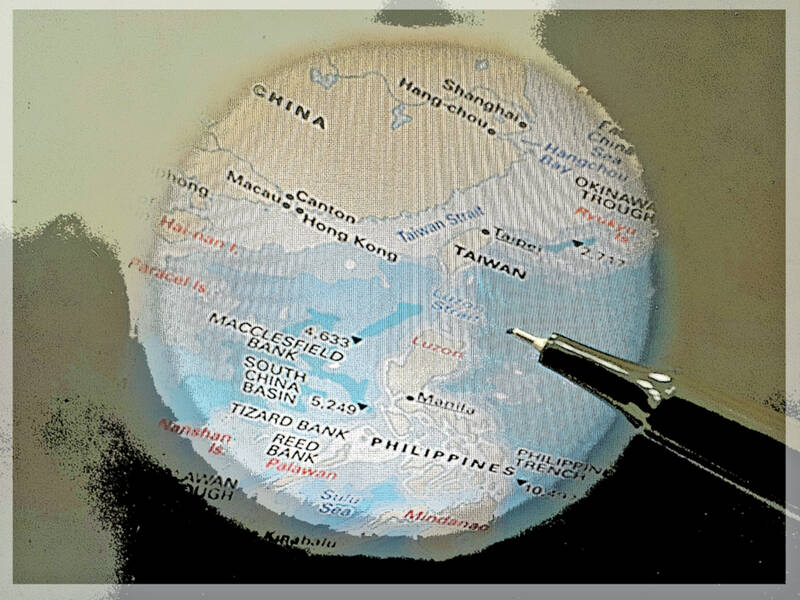
GRAPHI: TT
Previous invasions of Taiwan make good objects of study and reflection, but a related, yet independent historical event that is also worth exploring for its capacity to shed light on a potential invasion is the debate among US policymakers during World War II over whether Formosa or the Philippines should be the priority objective of the US move into the western Pacific, the so-called “Luzon vs Formosa” debate.
By May of 1943, the US Joint Chiefs had developed a strategic plan for carrying the war to Japan. According to The Approach to the Philippines: The War in the Pacific, Robert Ross Smith’s excellent book on the invasion of the Philippines, “its underlying concepts governed the planning and execution of operations in the Pacific during a year and a half of debate.”
The plan was driven by the understanding that an invasion of Japan would probably be necessary, and that such an invasion would require bombardment from the air in preparation for the invasion.
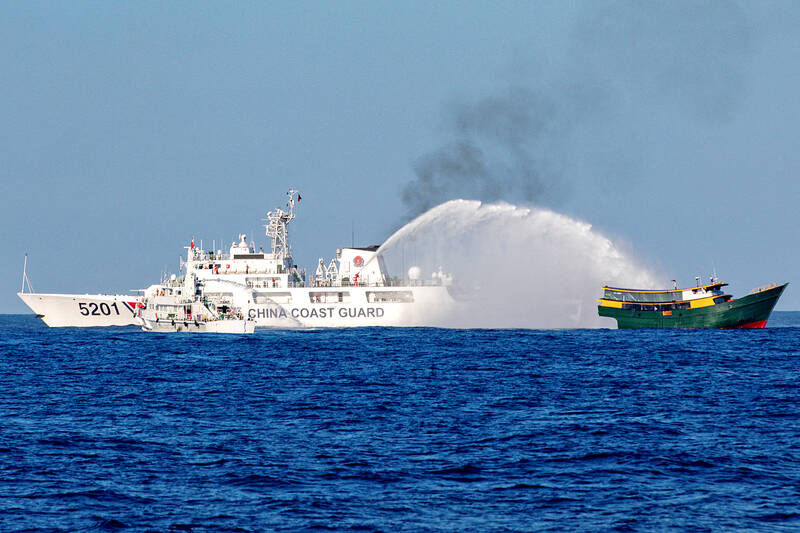
Photo: Reuters
This led, by process of logic, to the necessity of securing a port and airbases somewhere in the “strategic triangle” formed by Luzon (the largest island in the Philippines), Formosa and southern China. That meant in turn securing bases south of that area to support the seizure of Formosa or Luzon.
As debates continued, it became obvious to the Joint Chiefs that Formosa was by far the best target. The leading proponent for prioritizing Formosa came from Admiral Ernest J King, Chief of Naval Operations and Navy member of the Joint Chiefs of Staff. Craig Symonds writes in World War II at Sea that “King believed that seizing Formosa would cut Japan off entirely from her essential imports and starve her into surrender, making an invasion of the home islands unnecessary.”
King also believed that US bases in Taiwan would strangle Japan’s bases to the south. In fact, by the summer of 1945 starvation was widespread among Japanese troops stationed on the Pacific Islands, cut off from the home islands by a submarine blockade.
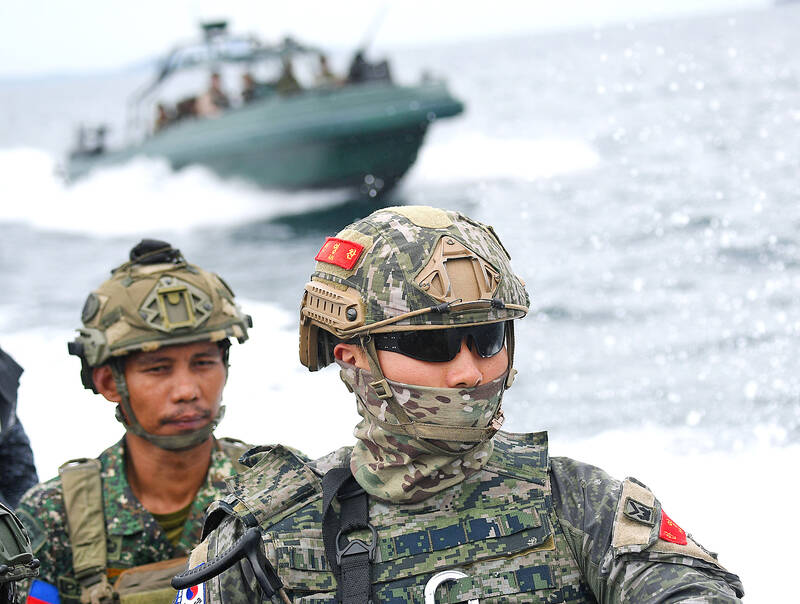
Photo: AFP
The PRC must see the same thing today, looking at Taiwan’s position. Is the “core interest” they so often refer to Taiwan, or is it war against Japan? Or is it the strategic leverage of the Pacific Islands to the south that the PRC would gain from holding Taiwan? After all, Japan is the second largest trading partner of the Pacific Islands after the PRC, according to its Ministry of Foreign Affairs.
By contrast, famed army general Douglas MacArthur argued for the Philippines, contending that the US had a moral obligation to rescue it from Japanese rule, and that, more practically, bases in Luzon would be necessary to support a US invasion of Formosa.
FOOD BLOCKADE
A third, and minority, position called for bypassing both in favor of directly invading Japan (or Okinawa). MacArthur cogently argued that bypassing some part of the Philippines while leaving it under Japanese rule would be, in essence, a food blockade of parts of the Philippines not in Allied hands.
The food issue today receives much attention as it bears on both Taiwan and the PRC, but the Taiwan debate seldom considers Japan. Japan’s number one source of imported food is the PRC, while five of its remaining top 10 importers are in Asia. War would devastate Japan’s food security. Similarly, while one might think the Philippines, with its abundant agriculture, would be fine, it’s in fact a net agricultural importer. Indeed, in the last three years it has been the world’s largest importer of rice.
This means that, in the event of war, even if Taiwan maintained a lifeline to Luzon to transport food and munitions, that food would have to come from outside the Philippines. Sourcing foodstuffs locally would drive up prices (which are going to skyrocket in war anyway), starving the poor. Can the Philippines’s land communications and logistics handle the dual demand for food and munitions for Taiwan and for local needs?
Smith describes in his book how US planners eventually gave up on Formosa because it would have been far easier for Japan to bring in aircraft to contest the invasion, and to bring troops and planes across the narrow strait from China, which it occupied. Invading Formosa would also force the US to engage in a campaigns against Japanese bases in Amoy (Fujian) in China, with secondary invasions that would call not only for unacceptable levels of combat troops, but also for even larger numbers of service troops, which the US did not have. It would consume so many landing craft that it would have to be delayed until November of 1945, pushing back other much-needed campaigns (the availability of landing craft was a key determinant of US strategy in all theaters).
Finally, MacArthur said that the Navy’s fast carrier groups would be pinned to the Formosa theater for a long period while the island was taken, whereas carriers would only be needed for the initial move on the Philippines. Once bases in Luzon were acquired, they could be released for operations elsewhere.
By contrast, the Philippines would offer MacArthur tens of thousands of loyal Filipino troops to support the US war effort, something that did not exist on Formosa. Gradually, the momentum shifted to Luzon. By late 1944, according to Smith, King was nearly alone in his view that Formosa-Amoy would be better.
PRC CAPABILITIES
Much ink has been expended on PRC capabilities and that nation’s enormous navy. Does the PRC possess the skilled rear echelon support units that would be needed in abundance for simultaneous campaigns against Taiwan and against the islands supporting it? Indeed, as Smith writes, US planners eventually opted for the Philippines not because Luzon was the better strategic choice, but because the US did not have the resources for the Formosa-Amoy campaign. The US, alas, sorely lacked most of what it would need to sustain such a war.
The choices and combinations of Luzon vs Formosa vs Okinawa vs Japan, the first island chain, are mirrored in PRC military planning today. Surely there must be PRC planners arguing that it will need to take Luzon or an island in the strait between Luzon and Taiwan, to secure the southern flank. As I have noted many times in this column, Beijing’s public interest in northern Luzon goes back many years. Hence, PRC gray zone operations against the Philippines in the South China Sea should be viewed as practice, and as tests of Manila for such operations.
Notes from Central Taiwan is a column written by long-term resident Michael Turton, who provides incisive commentary informed by three decades of living in and writing about his adoptive country. The views expressed here are his own.
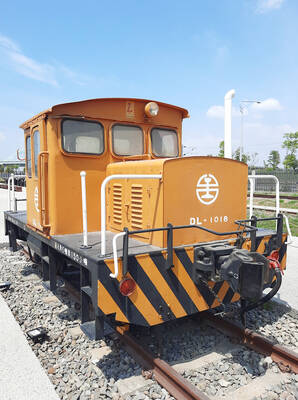
Taiwan doesn’t have a lot of railways, but its network has plenty of history. The government-owned entity that last year became the Taiwan Railway Corp (TRC) has been operating trains since 1891. During the 1895-1945 period of Japanese rule, the colonial government made huge investments in rail infrastructure. The northern port city of Keelung was connected to Kaohsiung in the south. New lines appeared in Pingtung, Yilan and the Hualien-Taitung region. Railway enthusiasts exploring Taiwan will find plenty to amuse themselves. Taipei will soon gain its second rail-themed museum. Elsewhere there’s a number of endearing branch lines and rolling-stock collections, some

The Democratic Progressive Party (DPP), Chinese Nationalist Party (KMT), and the country’s other political groups dare not offend religious groups, says Chen Lih-ming (陳立民), founder of the Taiwan Anti-Religion Alliance (台灣反宗教者聯盟). “It’s the same in other democracies, of course, but because political struggles in Taiwan are extraordinarily fierce, you’ll see candidates visiting several temples each day ahead of elections. That adds impetus to religion here,” says the retired college lecturer. In Japan’s most recent election, the Liberal Democratic Party lost many votes because of its ties to the Unification Church (“the Moonies”). Chen contrasts the progress made by anti-religion movements in
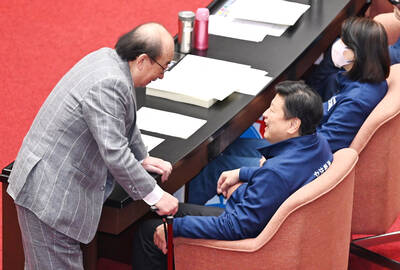
Could Taiwan’s democracy be at risk? There is a lot of apocalyptic commentary right now suggesting that this is the case, but it is always a conspiracy by the other guys — our side is firmly on the side of protecting democracy and always has been, unlike them! The situation is nowhere near that bleak — yet. The concern is that the power struggle between the opposition Chinese Nationalist Party (KMT) and their now effectively pan-blue allies the Taiwan People’s Party (TPP) and the ruling Democratic Progressive Party (DPP) intensifies to the point where democratic functions start to break down. Both
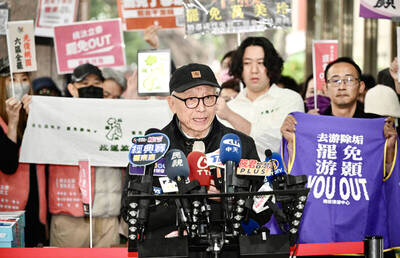
This was not supposed to be an election year. The local media is billing it as the “2025 great recall era” (2025大罷免時代) or the “2025 great recall wave” (2025大罷免潮), with many now just shortening it to “great recall.” As of this writing the number of campaigns that have submitted the requisite one percent of eligible voters signatures in legislative districts is 51 — 35 targeting Chinese Nationalist Party (KMT) caucus lawmakers and 16 targeting Democratic Progressive Party (DPP) lawmakers. The pan-green side has more as they started earlier. Many recall campaigns are billing themselves as “Winter Bluebirds” after the “Bluebird Action”